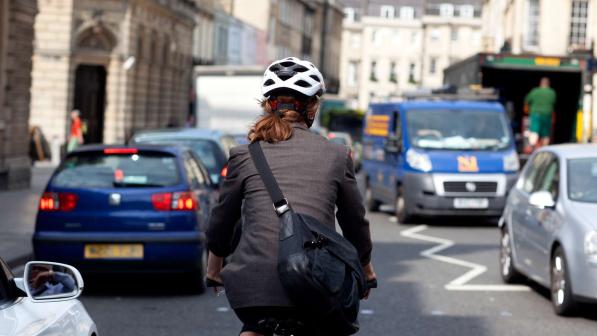Public Health England wants you to cycle

Yesterday (Thursday, 23 October) brought good news for cycling, as Public Health England (PHE), an executive body sponsored by the Department for Health, published its Everybody Active Every Day framework to tackle the national physical inactivity epidemic.
The framework paints a bleak picture of the current state of the nation’s health, citing that 1 in 6 deaths are inactivity related (the same as smoking), with 33 per cent of men and 45 per cent of women not active enough. PHE calculates that this costs the UK an estimated £7.4bn a year, and has the potential to destabilise public services if the current trend continues.
Unsurprisingly, the PHE sees being active as central to both our physical and mental health. The framework spells out what it believes is necessary to turn around the burgeoning health crisis, including an aim for more adults to be active for at least 150 mins a week and to reduce the numbers who are currently active for less than 30 mins.
The creation of environments that support active living is seen as crucial to building more physical activity into everyday routines. PHE argues that pedestrians, cyclists and other active travel users need the highest priority in terms of road and urban development. Consequently, town and transport planners are seen as key, and PHE will look to encourage them to work with public health professionals at a strategic level.
Recognising the National Institute for Health and Care Excellence (NICE) recommendations to promote cycling for transport and recreational services, the framework also highlights NICE encouragement for primary care practitioners to identify inactive people and deliver programmes for their benefit.
CTC believes that there is the real opportunity to promote cycle training for inactive people and others seeking low impact recovery methods, and that such training would provide excellent value in terms of time and money. Also like PHE, CTC has long argued that local authorities need to link local health policy with transport infrastructure, housing and planning policy.
Create safe and attractive environments where everyone can walk or cycle, regardless of age or disability."
Public Health England
Everyone Active, Every Day
Encouragingly for cyclists, the framework places the creation of attractive environments for cycling and walking high on its list of five steps which local areas should take to support change.
Currently the UK is now 20 per cent less active than we were in 1961, and current trends could see could see this increase to 35 per cent by 2030. PHE’s Everybody Active, Every Day argues forcibly for a change in the public mind set from Westminster to local authorities which would stem the rising tide of obesity.
CTC-led evidence has already demonstrated what ambitious, but achievable, cycling targets could achieve for the economy in health benefits alone. With the Chancellor due to make his Autumn Statement on 03 December, it seems increasingly clear that both cycle and government-tied health bodies are hoping that at last the UK will see proper and consistent funding for cycling.
To learn more about the benefits cycling can have for the economy and on your health click here for economy and here for health.
